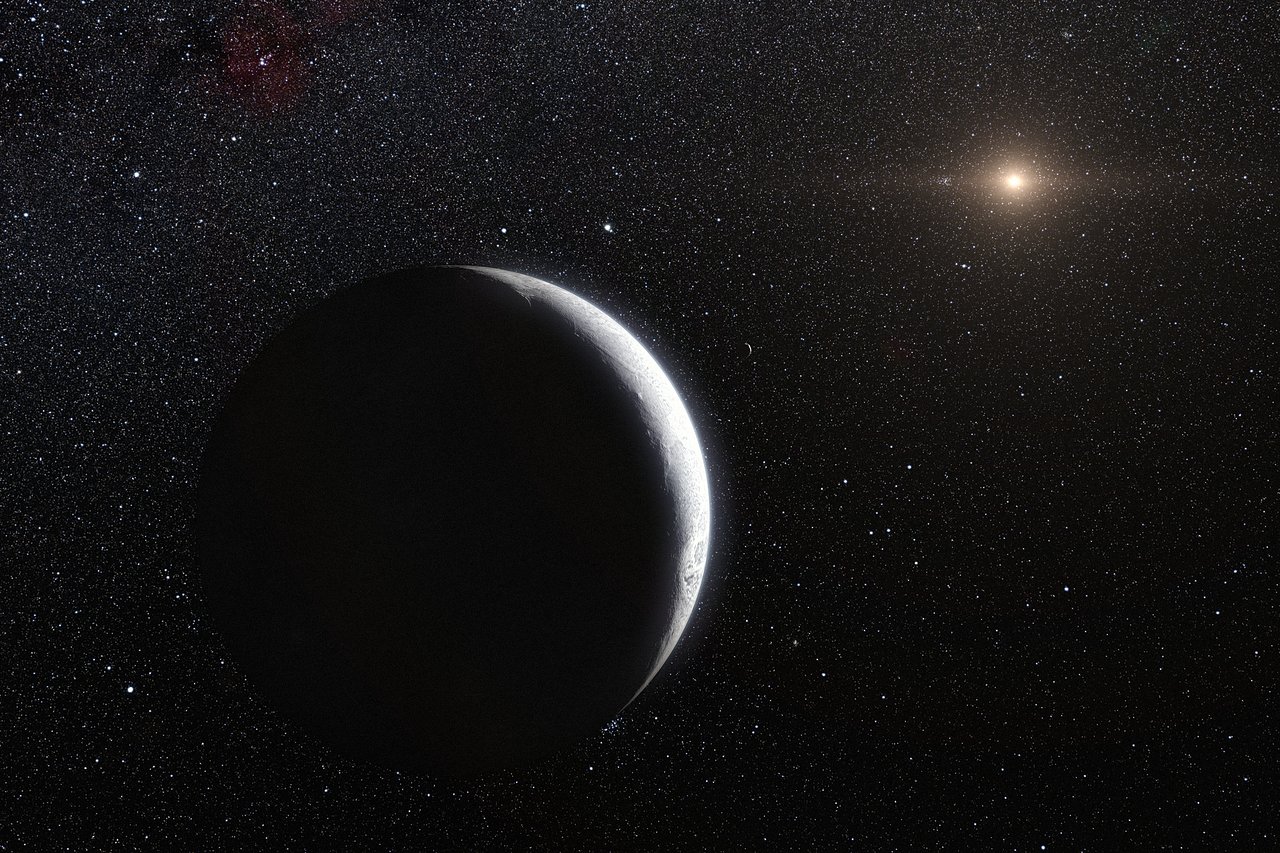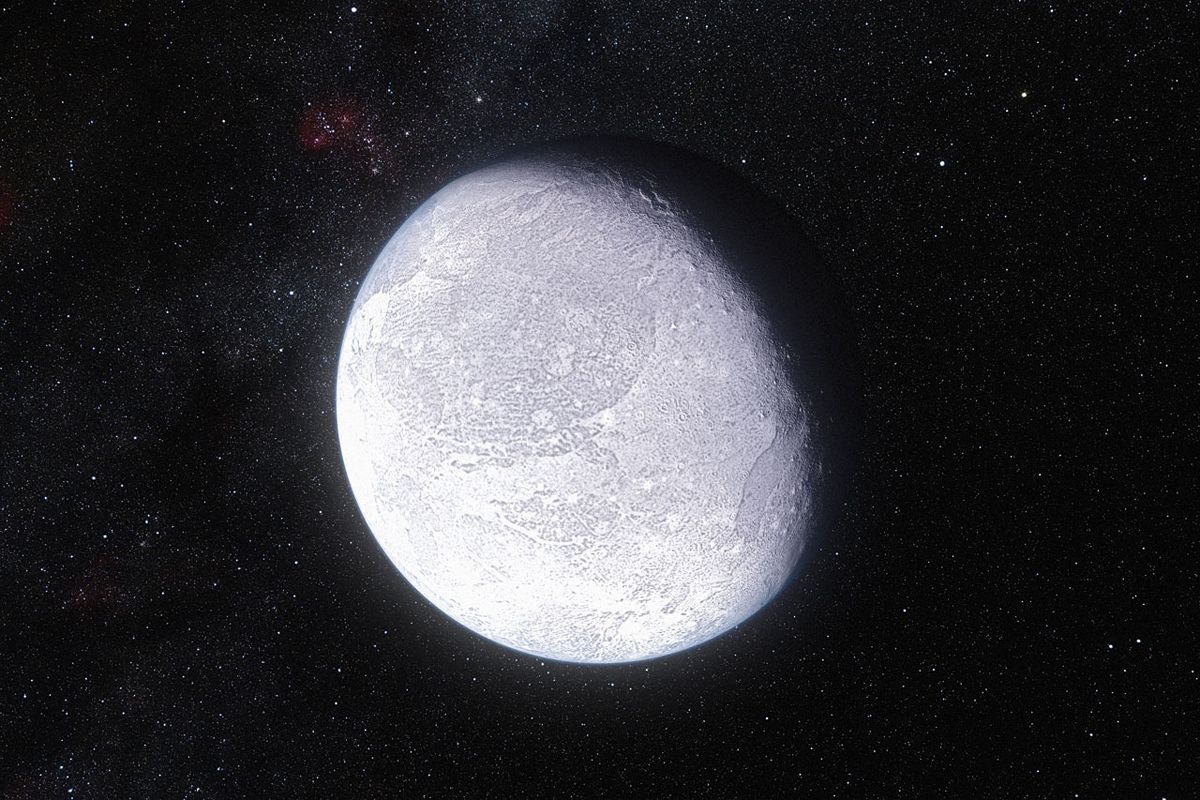Dwarf Planet Eris Is 'Squishier' Than Expected, Like A Slushie
Eris is thought to have a stable core of rocks and a layer of hard ice on top of that. However, the ice might not be so thick after all. A model made by researchers says that Eris is 'squishier' than expected, or more like a slushie.
Author:Paula M. GrahamReviewer:Hajra ShannonDec 06, 20235.4K Shares166.4K Views

Eris is thought to have a stable core of rocks and a layer of hard ice on top of that. However, the ice might not be so thick after all. A model made by researchers says that Eris is 'squishier' than expected, or more like a slushie.
As far as we know, Eris is the second-largest and heaviest small planet in the Solar System. It is at the very edge of our solar system, in the Kuiper belt, which is the disc of space around the stars that goes beyond Neptune.
We do know that Eris has an atmosphere that freezes and snows on the surface below because it is so close to the edge of the solar system. It's 68 times farther away from the sun than Earth. New models made from data from several radio telescopes in Chile have now shown us more about Eris. It looks like heat from when the dwarf planet was formed is slowly leaking out and bending its icy surface.
Dwarf Planet Eris Is 'Squishier' Than Expected
In 2005, the astronomical community was thrust into a fervent debate when Mike Brown and colleagues revealed the existence of Eris, an intriguing planetoid nestled in the Kuiper Belt beyond Neptune's orbit. Named after the Greek goddess of strife, Eris, along with its celestial companions Haumea and Makemake, fueled the ongoing "Great Planet Debate" that continues to captivate astronomers worldwide.
Recent strides in observing Eris have enhanced our understanding of its size and mass, yet a shroud of mystery surrounds its internal structure and how it compares to Pluto. Astronomers Mike Brown and UC Santa Cruz professor Francis Nimmo, in a groundbreaking studypublished in Science Advances, unveiled models suggesting Eris boasts a differentiated composition, distinguishing it from Pluto.
The research journey began when Nimmo visited Brown at Caltech, uncovering previously unpublished data that held the key to Eris's enigma. Despite Eris and Pluto sharing similar dimensions, Eris's highly eccentric orbit, ranging from 38.271 AU at perihelion to 97.457 AU at aphelion, sets it apart. Nimmo explained:
“„The bigger the moon is, the faster the planet spins down. And so as soon as you know that, then you can actually start to do real calculations.- Francis Nimmo
Crucially, the study leveraged new mass estimates for Eris's moon, Dysnomia, shedding light on Eris's internal dynamics. Dysnomia's size, mass, and density remained elusive until recently when Brown and colleague Bryan J. Butler employed the Atacama Large Millimeter-submillimeter Array (ALMA) for observations. The findings, disclosed in The Planetary Science Journal, revealed Dysnomia's diameter to be approximately 615 km (382 mi), with a mass ratio of 0.0085 with Eris.
This newfound knowledge became the linchpin for understanding Eris's internal structure. Brown and Nimmo's model surprised the scientific community, suggesting Eris has a rocky core enveloped by an icy shell and a convecting crust, a departure from Pluto's conductive shell as revealed by the New Horizons mission. Nimmo explained:
“„The rock contains radioactive elements, and those produce heat,” Nimmo said. And then that heat has to get out somehow. So as the heat escapes, it drives this slow churning in the ice.- Francis Nimmo
The dissipation observed in Eris adds a layer of complexity to its nature, creating avenues for further exploration. The scientists are hopeful for more precise measurements of Dysnomia's mass and additional data on Eris's shape. However, due to Eris's considerable distance, monitoring its shape involves meticulous observations as it passes in front of background stars, a technique akin to the Transit Method used for detecting exoplanets.
Last Words
The tiny planet Eris, which is sometimes called Pluto's almost twin, didn't act the way scientists thought it would. Scientists were shocked that it looked like it was soft and not solid.
A little over 18 years ago, astronomers found a tiny, cold planet beyond Neptune. They called it Eris. However, Eris has not had any robotic guests like its dwarf planet neighbor Pluto, which New Horizons visited in 2015 and found to be a lively, active world. In fact, it is so far away from Earth that it only looks like one light point when seen from Earth. On the whole, not much is known about what goes on in Eris.

Paula M. Graham
Author

Hajra Shannon
Reviewer
Latest Articles
Popular Articles
